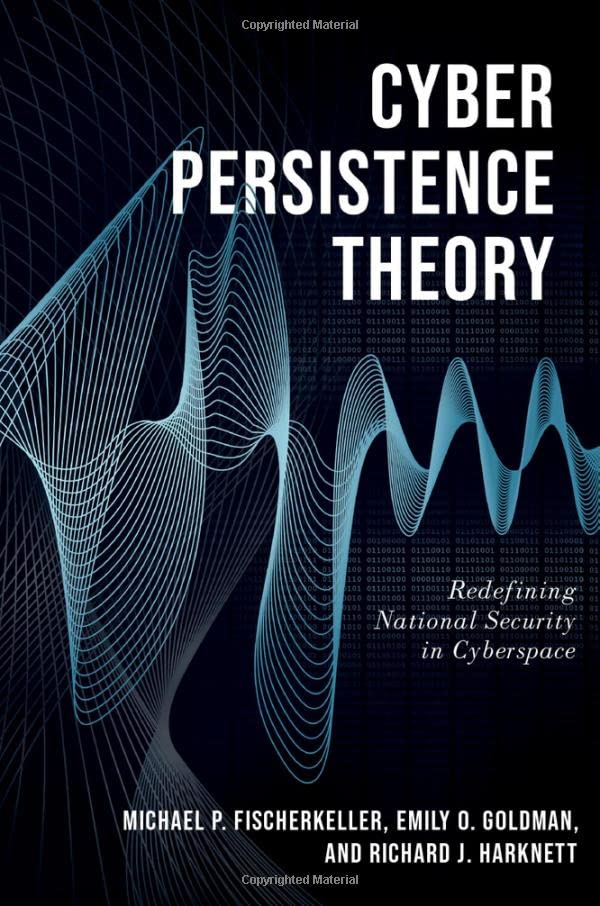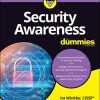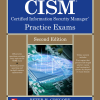(EBook PDF) Cyber Persistence Theory Redefining National Security in Cyberspace 1st edition by Michael Fischerkeller, Emily Goldman, Richard Harknett 0197638287 9780197638286 full chapters
$50.00 Original price was: $50.00.$25.00Current price is: $25.00.
Cyber Persistence Theory: Redefining National Security in Cyberspace 1st edition by Michael P. Fischerkeller, Emily O. Goldman, Richard J. Harknett – Ebook PDF Instant Download/DeliveryISBN: 9780197638286, 0197638287
Full download Cyber Persistence Theory: Redefining National Security in Cyberspace 1st edition after payment

Product details:
ISBN-10 : 0197638287
ISBN-13 : 9780197638286
Author: Michael P. Fischerkeller, Emily O. Goldman, Richard J. Harknett
A bold re-conceptualization of the fundamentals driving behavior and dynamics in cyberspace.Most cyber operations and campaigns fall short of activities that states would regard as armed conflict. In Cyber Persistence Theory, Michael P. Fischerkeller, Emily O. Goldman, and Richard J. Harknett argue that a failure to understand this strategic competitive space has led many states to misapply the logic and strategies of coercion and conflict to this environment and, thus, suffer strategic loss as a result. The authors show how the paradigm of deterrence theory can neither explain nor manage the preponderance of state cyber activity. They present a new theory that illuminates the exploitive, rather than coercive, dynamics of cyber competition and an analytical framework that can serve as the basis for new strategies of persistence. Drawing on their policy experience, they offer a new set of prescriptions to guide policymakers toward a more stable, secure cyberspace.
Cyber Persistence Theory: Redefining National Security in Cyberspace 1st Table of contents:
1. The Misapplied Nexus of Theory and Policy
War, Coercion, and Deterrence
It’s Strategic Exploitation
Purpose of This Book
2. The Structure of Strategic Environments
Thinking Structurally
The Structure of the Conventional and Nuclear Strategic Environments
Deterrence
Defense and Deterrence by Denial
Technology but Not Technological Determinism
Structure and Imperatives
Existing Strategic Environments and Cyber Activity
The Structure of the Third Strategic Environment
An Alternative Theory
Conclusion
3. Cyber Behavior and Dynamics
State Behaviors
Inter-State Phenomena and Dynamics
A Consideration of Escalation Actions and Dynamics
Potential Impact of AI on Behavior and Dynamics
Tacit Coordination, Tacit Cooperation, and Tacit Bargaining
Conclusion
4. Theory and the Empirical Record
Operational Persistence
Exploitation and the Cyber Fait Accompli
Strategic Outcomes
Competitive Interaction and Escalation within Cyberspace
Current Scarcity of Direct Cyber Engagement
Data Representativeness and Counterfactual Exploration
Conclusion
5. Cyber Stability
Stability and Initiative Persistence
Destabilizing Elements
Stabilizing Mechanisms in an Initiative Persistent Environment
Seeking Consensus on International Law (or Other International Formal Agreements)
Tacit Coordination—Mutual Understandings through Independent Expressions of Opinio Juris
Tacit Bargaining—Seeking Mutually Dependent, Mutual Understandings through Cyber Interactions
Ever-Changing Technology
Conclusion
6. The Cyber Aligned Nexus of Theory and Policy
Policy Implications
Paradigm Change
7. United States Case Study
2010 to 2014
2015 to 2017
2018 to 2021
Viewing US Cyber Strategy through the Lens of Kuhnian Paradigm Change
Actions to Further Institutionalize a Kuhnian Change
Organizing to Seize the Initiative—From Whole-of- Government to Whole-of-Nation-Plus
US Choices
People also search for Cyber Persistence Theory: Redefining National Security in Cyberspace 1st:
types of cyber security protection
what are the 3 pillars of cybersecurity
cybersecurity vs cloud security
cyber persistence theory pdf
cyber persistence theory
Tags:
Michael Fischerkeller,Emily Goldman,Richard Harknett,Cyber Persistence,Redefining National,Cyberspace
You may also like…
Politics & Philosophy - Warfare & Defence
The Palgrave Handbook Of National Security 1st Edition Michael Clarke
Mathematics - Logic
Politics & Philosophy
National Security, Statecentricity, and Governance in East Asia Howe
Politics & Philosophy - Government & Politics
Politics & Philosophy - Warfare & Defence
History - Russian & Soviet History
Computers & Technology
See Yourself in Cyber: Security Careers Beyond Hacking 1st Edition












